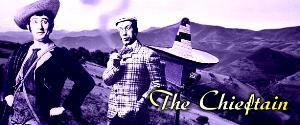
|
|
You are here:
>>
>
>
Introduction
Introduction by Clifton Coles The Chieftain is an expansion and continuation of The Contrabandista (1867), composed early in Sullivan's career after the success of Cox and Box. Essentially, the first acts of The Contrabandista and The Chieftain are identical. The dialogue, however, is completely new, several new songs have been added, and the act finale extended. The second act is entirely new. The Chieftain continues the earlier opera's story, offering a more plausible solution to Peter Adolphus Grigg's escape from the Spanish brigands. The Chieftain is of all Sullivan's operas the most difficult to appreciate. The blame has been placed squarely on the libretto. Admittedly, the plot is thin, some songs are without purpose, and many of the lyrics are inane in the xtreme. Though he had written dozens of burlesques, operettas, and short plays since The Contrabandista, all of Burnand's theatrical experience seemed to fail him in creating The Chieftain. Part of this may be due to the fact that the short form was Burnand's forte. He apparently was not up to the challenge of creating a full-length piece -- which may explain why he turned to a thirty year old operetta for inspiration. It is not a work without merit, however. Unlike most of Gilbert's operas, The Chieftain is not a work that is best enjoyed simply by reading. Of all the Savoy operas, it is probably the most dependent on stage direction, choreography, and competent acting. The trio "What is the matter, Peter?" in the second act provides an excellent example of the uniqueness of this opera. With its multitude of stage directions, including asides, misunderstandings between characters, and blocking, this number requires acting of some caliber in order to convey the author's multiple meanings. Unfortunately, it all comes across as weak on paper. Other numbers, particularly "La criada," call for the same competence in acting and stage direction and are equally uninspiring on paper. The lack of availability of the vocal score or of a professional recording have helped to relegate The Chieftain to third-rate work from Sullivan. It will be hard to convince readers otherwise, but this opera does have its musical moments. The contemporary press particularly liked the act two duet for Vasquez and Rita in which they reminisce in grammar school French about their courtship. Whatever its musical merits, the duet is dramatically weak, however. Sullivan's reasons for accepting The Chieftain are not recorded, but money was certainly an issue (as it frequently was with Sullivan), as was loyalty to producer Carte. In all probability, the production of Gilbert's His Excellency in October 1894 at the Lyric Theatre was also a factor. Waning audience interest prompted Sullivan and Burnand to attempt revisions. The majority of the alterations occur in the first act, the second act remaining nearly untouched. As a result, The Chieftain exists in two versions, the later one minus the choral Angelus and the ensemble "Wanted a Chieftain." Two sections were replaced with new material: Inez's song "Let others seek the peaceful plain" was replaced by her "My parents were of great gentility"; and the solo dance ("La fiesta del amor") for Juanita in the act one finale was rewritten as a dance for Grigg and Juanita. The song "My parents were of great gentility" has little to do with the plot, but it made it into the show while an equally pointless song for Rita, meant to replace "Only the night wind sighs," apparently did not. The changes were to no avail, however, and The Chieftain closed after three months. The only artists from the grand old days of the Savoy featured in The Chieftain were Rosina Brandram as Inez, Courtice Pounds as Vasquez, and Richard Temple as Sancho. Walter Passmore played the principal comic role of Peter Adolphus Grigg, and Florence Perry played his wife Dolly. Rounding out the major roles were the familiar names of Florence St. John (Rita), Emmie Owen (Juanita), Scott Fishe (Ferdinand), and Scott Russell (Blazzo). For a more complete dicussion of the evolution of The Chieftain, see David Eden's article "The Chieftain: Background and Text" in A Centenary Review of Sullivan's Partnership with F.C. Burnand published by the Sir Arthur Sullivan Society in 1994. - Clifton Coles Page created 26 October 2003 |